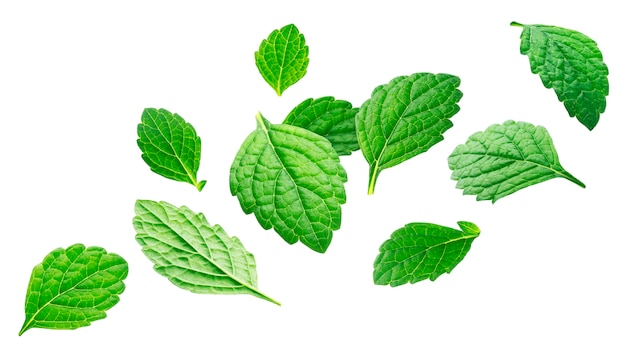
Introduction
Mint is a widely used herb known for its refreshing flavor and various health benefits. However, some individuals may experience adverse reactions to mint consumption due to a mint allergy. In this article, we will explore the causes, signs, and management of mint allergy symptoms.
1. What is a Mint Allergy?
A mint allergy is an immune system response triggered by the proteins present in mint leaves or products containing mint. When an individual with a mint allergy comes into contact with mint, their immune system identifies these proteins as harmful invaders, leading to an allergic reaction.
2. Causes of Mint Allergy
The exact cause of allergies, including mint allergy, is not entirely understood. However, it is believed to be a combination of genetic predisposition and environmental factors. Exposure to mint or mint-related substances can sensitize the immune system, leading to an allergic response upon subsequent contact.
3. Identifying Mint Allergy: Common Signs and Symptoms
Mint allergy symptoms can vary from mild to severe and may manifest in different parts of the body. Here are some common signs to watch out for:
3.1 Skin Reactions
Skin reactions are one of the most common allergy symptoms and may include:
- Hives: Raised, itchy, and red welts on the skin.
- Eczema: Inflamed, dry, and itchy skin patches.
- Contact Dermatitis: Skin irritation upon direct contact with mint.
3.2 Respiratory Issues
Respiratory symptoms may affect the airways and include:
- Runny or Stuffy Nose: Nasal congestion and excessive mucus production.
- Sneezing: Frequent and sudden sneezing due to irritation.
- Coughing and Wheezing: Irritation in the respiratory tract leading to coughing and wheezing.
3.3 Gastrointestinal Problems
- Nausea: Feeling of queasiness and discomfort in the stomach.
- Vomiting: Forceful expulsion of stomach contents through the mouth.
- Diarrhea: Frequent loose or watery stools.
3.4 Anaphylaxis: Severe Allergic Reaction
In rare cases, individuals with a severe mint allergy may experience anaphylaxis, a life-threatening allergic reaction that requires immediate medical attention. Symptoms of anaphylaxis include:
- Difficulty Breathing: Shortness of breath or wheezing.
- Swelling: Swelling of the face, lips, tongue, or throat.
- Rapid Heartbeat: Increased heart rate.
- Dizziness or Fainting: Feeling lightheaded or passing out.
- Severe Drop in Blood Pressure: Leading to shock.
4. Diagnosing Mint Allergy
If you suspect a mint allergy, it is essential to seek medical advice for proper diagnosis. A healthcare professional will take a detailed medical history and perform various tests to identify the specific allergen responsible for the symptoms.
4.1 Allergy Testing
Skin prick tests and blood tests, such as IgE antibody tests, are commonly used to identify mint allergies. These tests help determine the presence of specific antibodies in response to mint proteins.
4.2 Differential Diagnosis
Since mint allergy symptoms may overlap with other allergies or medical conditions, a differential diagnosis is necessary to rule out other potential causes.
5. Managing Mint Allergy
While there is no cure for allergies, effective management can significantly reduce the impact of mint allergy symptoms. Here are some strategies to consider:
5.1 Avoiding Mint and Mint-Containing Products
The most effective approach to prevent allergic reactions is to avoid all forms of mint, including fresh mint leaves, mint teas, candies, and flavored products containing mint.
5.2 Reading Labels and Restaurant Precautions
When grocery shopping, carefully read labels to identify products containing mint or mint derivatives. Additionally, inform restaurant staff about your mint allergy before ordering to avoid cross-contamination.
5.3 Medications for Symptom Relief
Over-the-counter antihistamines can help alleviate mild allergy symptoms. However, individuals with severe allergies may require prescription medications like epinephrine auto-injectors for emergency situations.
6. Cross-Reactivity with Other Allergens
It is important to be aware of potential cross-reactivity between mint and other allergens. People with mint allergies may also experience reactions to certain other plants and foods, such as oregano, basil, or lavender.
7. Living with Mint Allergy: Coping Strategies
Living with a mint allergy can be challenging, but with some precautions, it is manageable. Here are some coping strategies:
7.1 Educating Family, Friends, and Co-workers
Ensure that your close contacts are aware of your mint allergy and understand the potential severity of the allergic reactions. This will help them take appropriate precautions and provide support when needed.
7.2 Emergency Action Plan
Create an emergency action plan with your healthcare provider, detailing the steps to take in case of a severe allergic reaction. Share this plan with family members and friends.
7.3 Traveling with a Mint Allergy
When traveling, be prepared by carrying your medications and informing travel companions about your allergy. Research local cuisines to identify potential mint-containing dishes.
8. Growing Mint Allergy Awareness
Increasing awareness about mint allergies is crucial for the safety of those affected. Encourage open conversations about allergies in communities, schools, and workplaces to foster understanding and support.
FAQs
9.1 Can a mint allergy develop suddenly?
Yes, allergies can develop suddenly, even in adulthood. If you suspect a mint allergy, consult a healthcare professional for proper evaluation and management.
9.2 Can a mint allergy be outgrown?
While some allergies can be outgrown, it is not guaranteed. Allergies may persist throughout life, and it is essential to remain cautious even if symptoms improve over time.
9.3 Is peppermint oil safe for individuals with mint allergies?
No, individuals with mint allergies should avoid all forms of mint, including peppermint oil, as it can trigger allergic reactions.
9.4 Can mint allergy cause hives?
Yes, hives are a common skin reaction in individuals with mint allergies. Hives may appear as red, itchy welts on the skin.
9.5 What should I do if I accidentally consume mint and experience an allergic reaction?
If you accidentally consume mint and experience an allergic reaction, seek medical attention immediately. If you have been prescribed an epinephrine auto-injector, use it according to your emergency action plan while waiting for medical help.
Conclusion
Mint allergy symptoms can range from mild skin reactions to severe anaphylaxis. Identifying and managing mint allergies involve understanding the triggers, avoiding mint-containing products, and seeking proper medical care. By taking necessary precautions, individuals with mint allergies can lead a healthy and fulfilling life.









